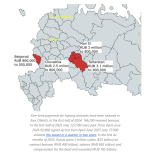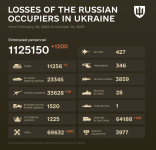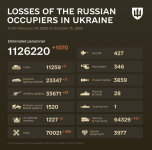ChloeTzang
Literotica Guru
- Joined
- Apr 14, 2015
- Posts
- 18,464
Update: All roads into Pokrovsk have been cut by Russian forces. In the coming days or weeks we could see a complete envelopment and fall of the city.
As far as I can make out, this is all coming from Russian propaganda sources and is fictitious. Russia launched some attacks, Ukraine rolled them up. Probably Russian commanders reporting fictional gains on order to look good with their bosses. None of the Ukrainian sources I use, most of whom are fairly blunt about what they regard as Ukrainain incompetency and Supreme Command failures, even mention these. They're all focused on the kettling and rolling up of the Russians on the northern side of Pokrovsk, which has been going well.



